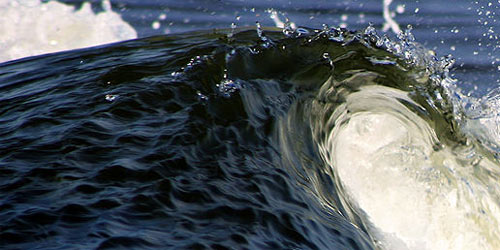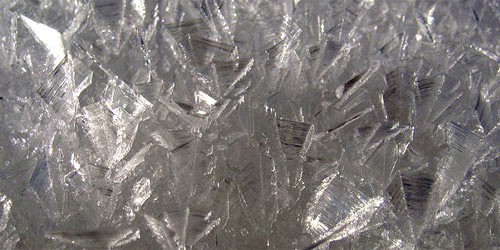Learn more
- Oct 9, 2008
Which flavour does knowledge have on the web?
In recent debates within the KiWi – Knowledge in a Wiki project, the need arose to further refine and find a common understanding of the type of knowledge that is (ideally) managed and processed using (semantic) wikis. One of the proposals evolved around a conceptualization of knowledge put forward by Gabi Reinmann-Rothmeier, also dubbed the “Munich Modell” (Münchner Modell).
In the Munich Modell, knowledge comes in three states of matter: solid (like ice), liquid (like water) and gas (like water vapor).
“Frozen” knowledge is knowledge in its most tangible, manageable form, for instance the type of verified, expert-endorsed information you would find in an encyclopedia like the Encylopedia Britannica.
“Gaseous” knowledge, on the other hand, is knowledge in its least consolidated form: think for instance of the type of heated debate you might have with folks in a pub, which is arguably the least structured, most uncontrollable, but also the most engaging type of knowledge!
And the “liquid” form of knowledge, eventually, is the common knowledge of day-to-day-life. It’s probably fair to say that it becomes obvious mostly when in the process of changing its state of matter: When it is calibrated against “frozen” or informational knowledge or when it is debated, becomes “gaseous” knowledge that informs action. (If you’d like to know more about the Munich model and are able to read German, you might want to download the original article here – PDF, 365 KB).
When talking about knowledge that is managed, used or, respectively, that evolves online, I think it also makes sense to pay some attention to the type of community that is preferred by particular online tools or environments. The particular flavour of knowledge, in this sense, is simultaneously characterized and shaped by the state of matter of knowledge and the form of the community that applies.
N.B. The following is not an immediate translation of the “Munich model”, but rather a reconceptualization which tries to also consider that different community models (and their implementation through IT) also play a role for the whole spectrum of knowledge management on and with the web (e.g. for online communication and interaction, online publishing and documentation and maintenance of web infrastructures).
Web-Flavour 1: The Blogosphere – gas, gas, gas!
Hmm… sniff it! This is the flavour I like best because it is my flavour. On the blogosphere (and twittersphere), knowledge is exchanged, developed further and evolves almost like in a pub debate… it does have the extra advantage though that you can add links, cite resources and that you get to keep your blog posts (or tweets or equivalents thereof) for later reference or debate. Different people approach blogging differently – the approach I would favour in the context of this definition is a form of blogging that invites dialog in that it allows others to comment and react, and where contributors aren’t anonymous, distant institutions, but are addressable using their personas/identities on the web. As such, contributions are often marked or tinted by the views and personality of that real-life person behind a persona/identity. As a short cut, think of this flavour as the flavour of the social media tag cloud.
Web-Flavour 2: Wikipedia – evolving slowly with the flow
Wouldn’t you agree that Wikipedia is like a sea of knowledge? It is fed by brooks and rivers (in this analogy: for instance the article and contributions that are invited on the Wikipeda Community portal) that make it rise and swell like tidal waves would, but mostly by millions, billions and trillions of tiny drops that trickle in on a daily basis. In comparison to the blogosphere, the world inside wikipedia is a rather neat and orderly one: Titles of pages are unique, and were they aren’t, there are disambiguation pages (like this one) in place. Even though articles are written by real humans (I assume), there is no visible author attached to an article (unless you start developing an interest for Discussion Pages, e.g. this one; most people don’t). Wikipedia is the sea of knowledge we bathe in on a day-to-day-basis without even noticing – just try to remember how many and which Wikipedia pages you have looked at today or this week – can you? Most probably not. It’s the result of a community effort, but it’s not about views and opinions of individuals, but about what we all know together or would know together if we could wire our brains to one another (tired of the Wikipedia examples? Check out Factolex instead, a collaborative, micro-content encyclopedia that allows you to extract and conceptualize bite-sized pieces of knowledge as you go).
This is the flavour I like to have around me every day, because it makes things easier without asking for a huge effort. It’s also the flavour of thesauri and metadata schemata.
Web-Flavour 3: The unfinished structure of ontologies
Flavor three is NOT (as one might expect) the flavour of the Encyclopedia Britannica Online (which is one huge data silo and therefore not relevant for my scope of interests) … instead, I would argue that it’s the flavour of the web’s infrastructures and of knowledge infrastructures like ontologies. Think of the geometry of snow flakes: they all follow rules but none of them is like another. The open world assumption of ontologies also applies to snow flakes – just because you haven’t seen a particular shape doesn’t mean it doesn’t exist! Nobody has the patent for building snowflakes – Wilson Bentley in his famous snowflake shots just captured an expression of rules that are out there, in the world, belonging to the world. Ontologies capture the structure of what, to the best of knowledge and belief, can be said about the world. Anyone can build an ontology, but we prefer to have experts do that job: members of the scientific community which has its own ranking and weeding mechanisms in place.
Flavour three is the flavour of things we wish to be able to rely on on the web, and where we can invest a trust that is much greater than the trust we invest in people. More like the trust we invest in, say, the laws of nature.
So what is the flavour of a Semantic Wiki?
A good mix of flavour two and three, I would argue. A Semantic Wiki is a vessel for the sea of relevant knowledge (relevant for instance for the members of a particular team), but enhances it with the structure of the domain knowledge that applies.
Having said that: A semantic wiki would be much spicier if it also had a bit of the flavour of the blogosphere and social media (i.e. flavour one), as there are tasks where a bit of a debate, a bit of a controversial exchange and the ability to respond to people directly is highly valuable! Just as water, knowledge goes through a cycle of different states of matter, and knowledge is not processed by segregated individuals, but in communities and through networks of people.
Before publishing this, I wanted to get some feedback in particular from KiWi members working on enabling technologies – here is Peter Dolog‘s take; Peter is an Associate Professor in the Information Systems Unit at the Dept. of Computer Science Aalborg University:
I like the distinction and comparison of knowledge to some natural elements like gas, liquids, solids or snowflakes. These give a good metaphor for understanding when talking about different flavours of knowledge. It is also fascinating to see how humans move between these three categories by participating in different social processes or simply by studying these things.
It is, however, a bit more difficult to see how this can be done or supported in the most suitable form on the web or in the intranets of companies. At the same time it seems to me, from the discussions we have had in the KiWi project, that semantic wiki platforms could indeed facilitate this. Wikis naturally provide the social contexts for contributions. Semantic wikis with tags and ontology management seem to be a first step towards a flexible knowledge consolidation infrastructure where one can move easily between these categories; and other technologies such as natural language processing and automated reasoning can help further. Personalization can further provide and adjust views on the knowledge according to preferences.
I am happy that we can study these phenomena in the KiWi project at least to a certain extent and perhaps contribute to this as well. I am confident that this is relevant also for the industry and especially for large distributed companies where externalization of knowledge is a must.
So there is a lesson to be had: When building a knowledge management system using the web, think of the three states of knowledge, but most importantly, also think of the form of community and community processes that are required or preferable to allow future users to really put that knowledge to work – melt it, share it, heat it, debate it, freeze it, keep it, let it evolve!
Image sources on Wikicommons:
Water vapour by Markus Schweiss
Wake at Boelge Stor by Malene Thyssen
Ice Crystals by Petr Dlouhý
Author: Jana Herwig



 I like the distinction and comparison of knowledge to some natural elements like gas, liquids, solids or snowflakes. These give a good metaphor for understanding when talking about different flavours of knowledge. It is also fascinating to see how humans move between these three categories by participating in different social processes or simply by studying these things.
I like the distinction and comparison of knowledge to some natural elements like gas, liquids, solids or snowflakes. These give a good metaphor for understanding when talking about different flavours of knowledge. It is also fascinating to see how humans move between these three categories by participating in different social processes or simply by studying these things.![Reblog this post [with Zemanta]](http://img.zemanta.com/reblog_e.png?x-id=1191ebe6-70f7-4499-bd60-846933c56894)